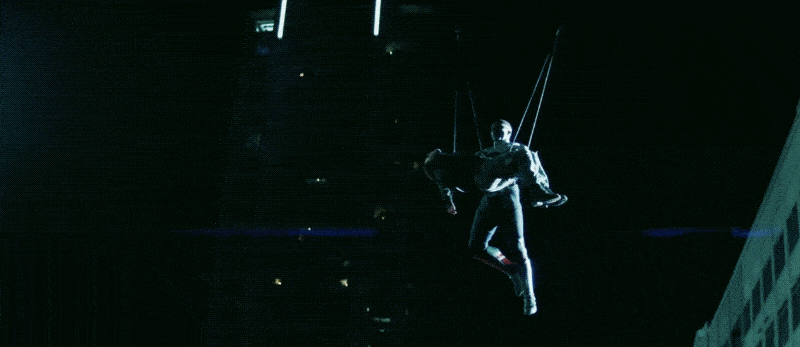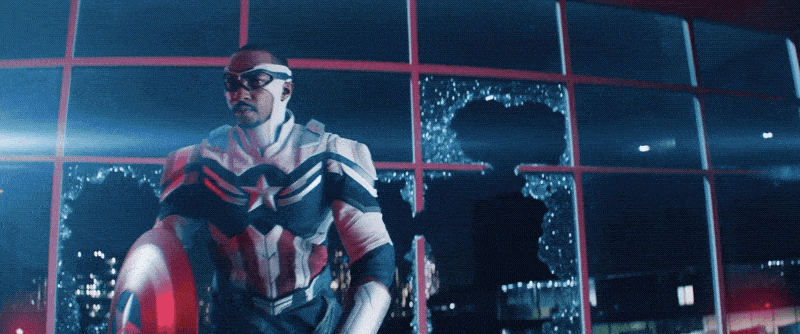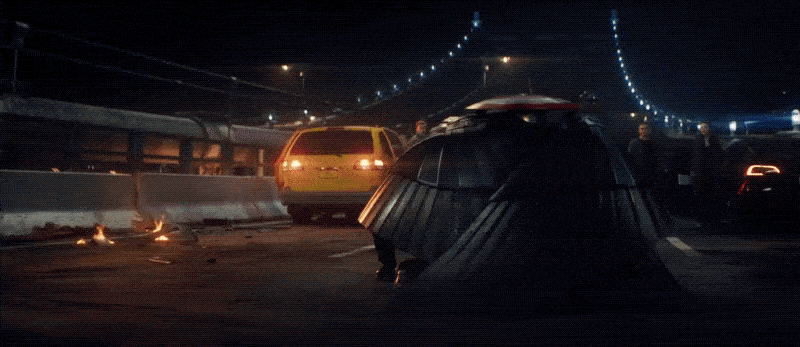Welcome to World Builders, our ongoing series of conversations with the most productive and thoughtful behind-the-scenes craftspeople in the industry. In this entry, we chat with Visual Effects Supervisor Eric Leven about the story-saving last-minute additions to The Falcon and the Winter Soldier VFX.
Marvel Studios does not believe in getting it done early. They take their productions right up to the last minute, tweaking every detail until it’s just right, or, more accurately, until it’s time for the audience to press play. Only the deadline has the final say.
Visual Effects Supervisor Eric Leven delights in this method. He and his team required all the seconds to sell not only The Falcon and the Winter Soldier‘s grand aerial battles but also to hide the many, many, many seams holding Anthony Mackie within his new, and glorious, Captain America costume.
The Marvel movies and shows are found within the rewrites, reshoots, and CGI refinements. If there was no finish line, Leven could tinker forever. There’s always one more strand to adjust, one more color to enhance. Given the extraordinary nature of the past year, Leven and his team received an altered schedule and added time. Although where some time got introduced, other chunks of time were erased. Once the premiere date was made, that was the only number that mattered.
Originally planned as the big MCU-on-TV coming out party, The Falcon and the Winter Soldier was designed to slap you across the face with its massive aerial action opener. The early effects budget was much lower, but it became obvious that they could not skimp on anything. As a result, the Falcon and the Winter Soldier demanded as much financial love as any other Marvel blockbuster.
“The appetites were high,” says Leven. “The initial budget was lower because it was a streaming show, and they were like, “Yeah, we need to keep the budgets relatively low.’ Very quickly, it became clear that no, we can’t skate by on low budgets. We need everything to be as good or better than the features. The resources need to be similar. So, yeah, very quickly, the budgets went up to meet the needs.”
While The Falcon and the Winter Soldier may not appear to have as many spectacular bursts of CGI as the previous team-up extravaganza, the six-part Disney+ series is splattered with visual effects, and whatever you don’t notice only increases Leven’s pleasure. They were not making an Avengers movie. Their main MCU reference was Captain America: The Winter Soldier. It’s not Kramer vs. Kramer, but there are no Infinity Gauntlets in sight and no blue beams in the sky.
“Grounded realism was really the name of the game,” he says. “No Wanda wiggly woos. But, if people were flying around with jet packs blowing up helicopters, what would that look like?”

Refinement is constant. Plans are rapidly changing, and sometimes it was on Leven to hit the breaks on some ideas. You may not regard Marvel Studios as masters of restraint, but you’d be wrong. For The Falcon and the Winter Soldier to own its grounded reality, the show’s climax demanded a conceptual reset.
“The helicopter battle in [the final episode] was originally supposed to take place amongst the New York City buildings,” says Leven. “We kind of put the kibosh on that because it was just getting too crazy. And frankly, being able to do a realistic helicopter chase in Manhattan would have been impossible, just because you’re not allowed to fly for real in those buildings and trying to do it on CG was not going to look right.”
As important as the action was within that final episode, Sam’s big reveal as Captain America was even more crucial. That costume had to look like straight fire. Finding the right moment and the right frame to sell our new sentinel of liberty necessitated several conversations involving all departments.
“There was a lot of discussion about how that suit was going to be revealed,” he says. “Initially, [Sam] was going to reveal it in [Episode 5]. He was going to show it off to his family and his neighbors at the dock. They sort of put the kibosh on that. Then, he was going to basically fly to the GRC [Global Repatriation Council] and land on the ground, and all of a sudden, all the people on the ground were going to see him. They put a kibosh on that. It doesn’t make sense for a guy with wings to fly to the ground and then also fly up to the hundredth floor of the building. Just get him in the building!”

The GRC building, however, was under attack. When the Flag-Smashers stormed the conference, they triggered the emergency lighting. Unfortunately, that’s a whole lotta red, a color that absolutely clashed with Sam’s new duds. Oops.
“So he landed in this red environment originally,” Leven continues. “And then the editor basically said, ‘You can’t do that! This is the first time you’re going to see this red, white, and blue costume. If it has a red tint, the whites look pink, and the reds look like they’re the wrong color. You got to re-shoot it with white lights.'”
Yes, Marvel loves its reshoots, but at this late in the game, simply re-shooting the reveal was not an option. Lightening speed solutions were critical at this stage. Leven’s group got to work.
“We basically created a little space for him to land in white light before he steps into the red light,” he says. “And then there was a moment of, ‘Maybe we just need one more additional awesome comic book cover-shot of him coming into the building.’ That shot of him coming in, where he throws his shield, that was lifted right from a comic book cover to just make the entrance as good as possible.”

Leven has worked on numerous projects in all shapes and sizes (from Starship Trooper 2 to Cloverfield to The Twilight Saga: Breaking Dawn). Every studio has its own vibe, but none operate like Marvel. They’re not about first drafts or second drafts, or third drafts. They’re all about that seventy-eight to a hundred drafts. Whatever they can cram in before release.
“With most studios, you have a plan, and you execute it,” explains Leven. “And that’s it. For the most part, that’s what’s on the screen. With the Marvel shows, it was a continuous refinement to make things better and better and better. At the end of the day, there is a release date, and you’re up against that wall. But you better believe you’re going to work right up until the absolute drop dead. Because there’s always something better to do.”
COVID was a nightmare for the world, but it gave Leven a few extra beats and a few dozen extra drafts to create before hitting submit on his final work. Those concluding minutes were not easy, and they allowed for an array of last-ditch suggestions, but that’s where everything came together.
“Everybody really strives to make the project as good as it possibly can be. Then, at the last second, they’ll say, ‘You know, just change this from red to blue.’ And suddenly, the VFX facilities are scrambling to make that change, but it’s better. So, everyone goes for it.”
The Falcon and the Winter Soldier is currently streaming on Disney+.
0 comments:
Post a Comment